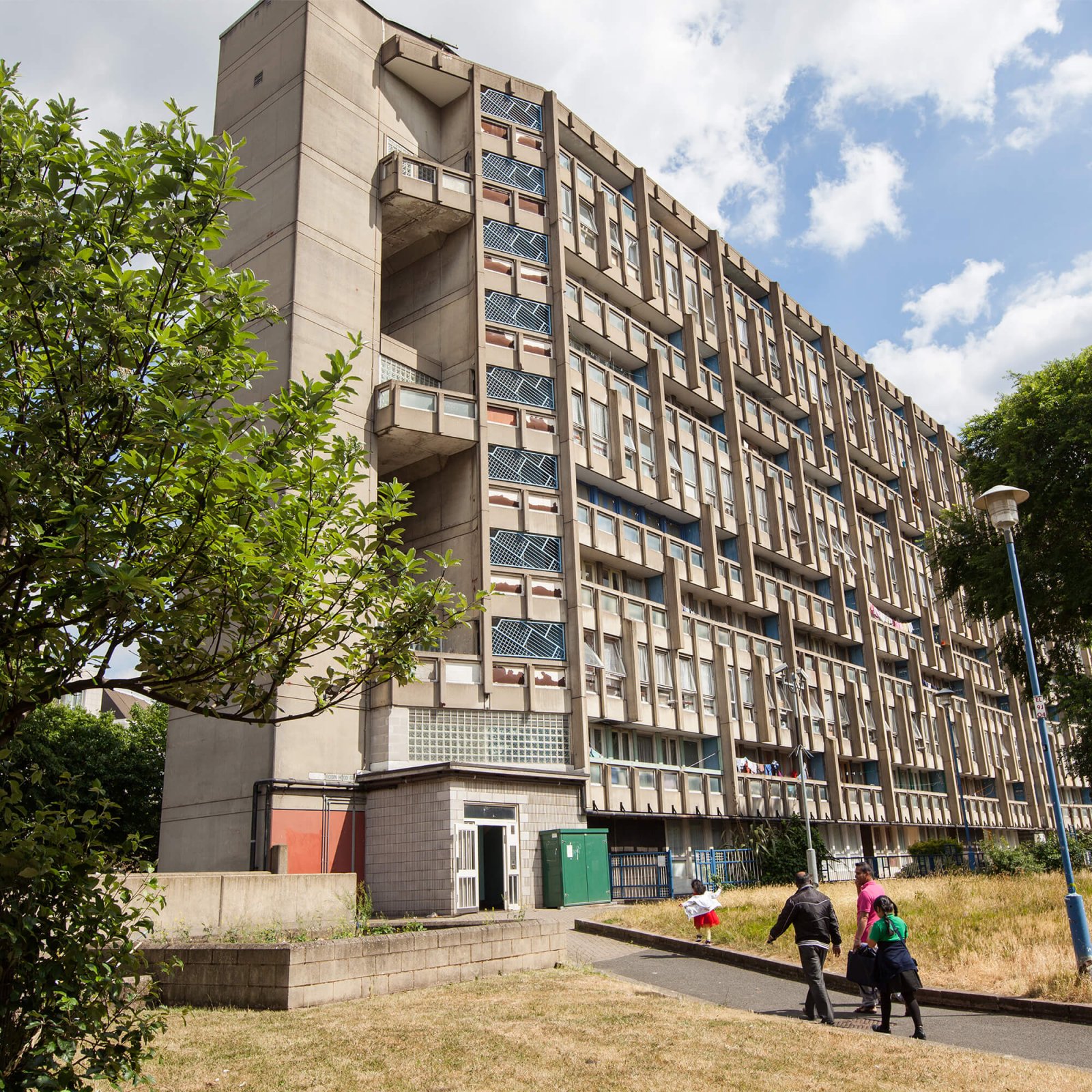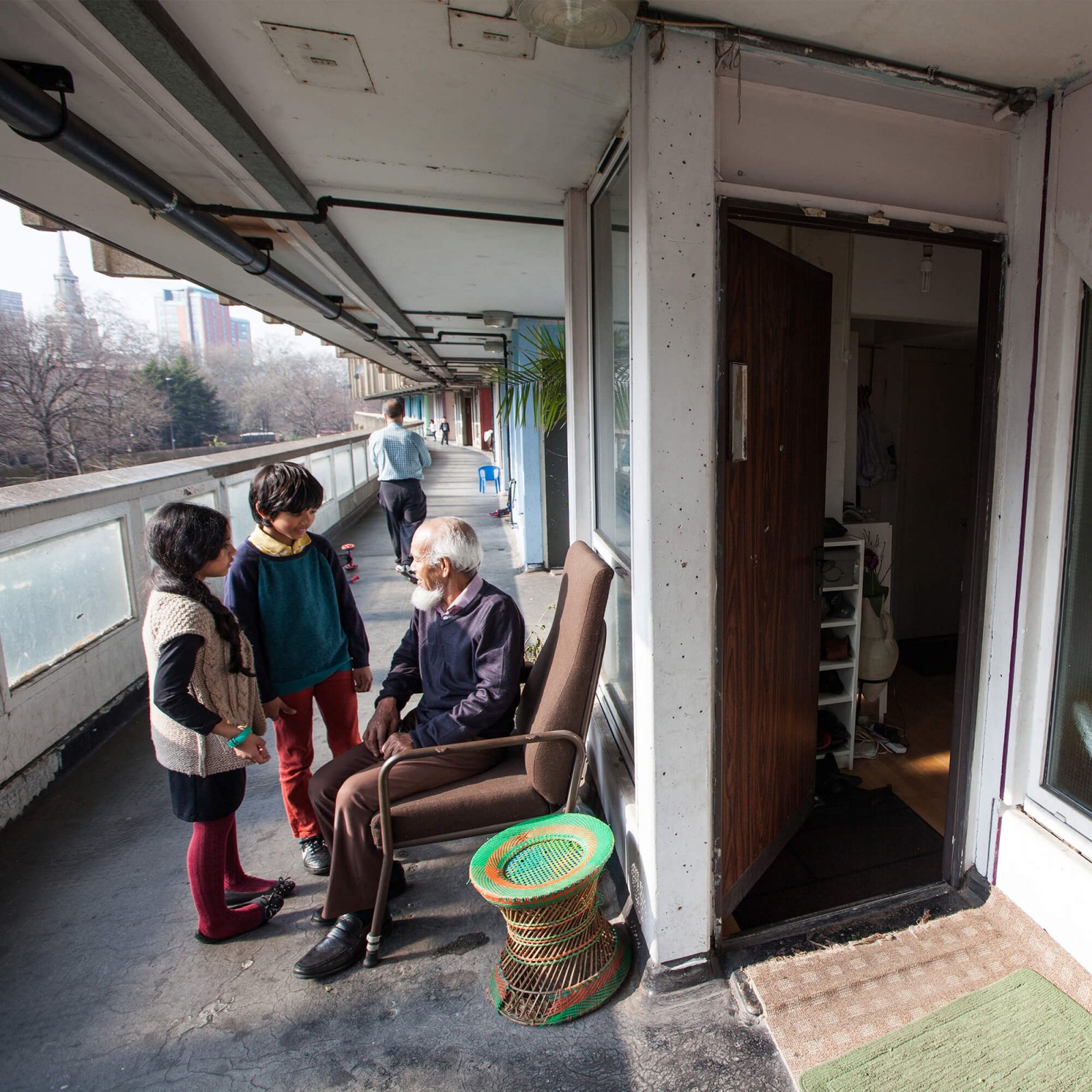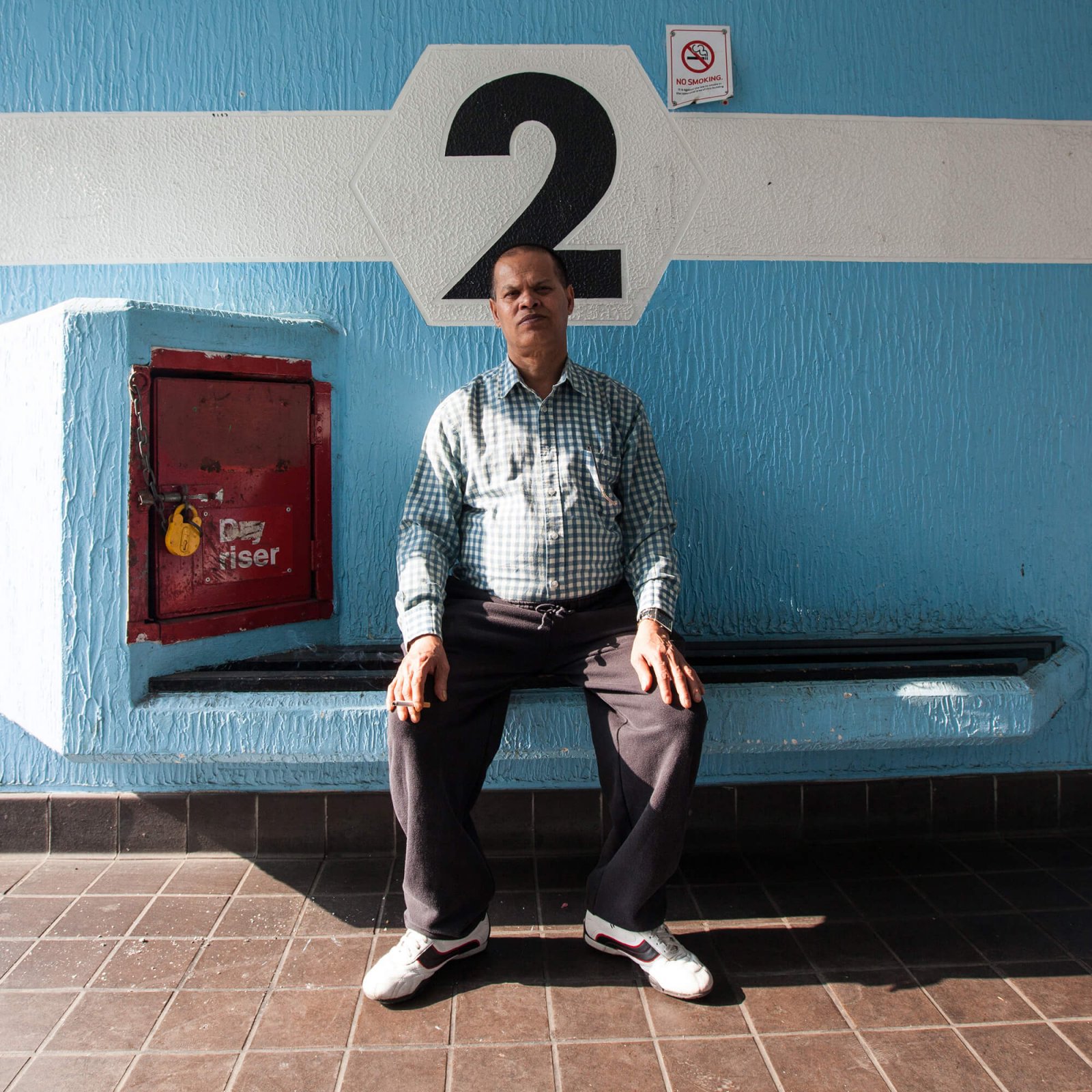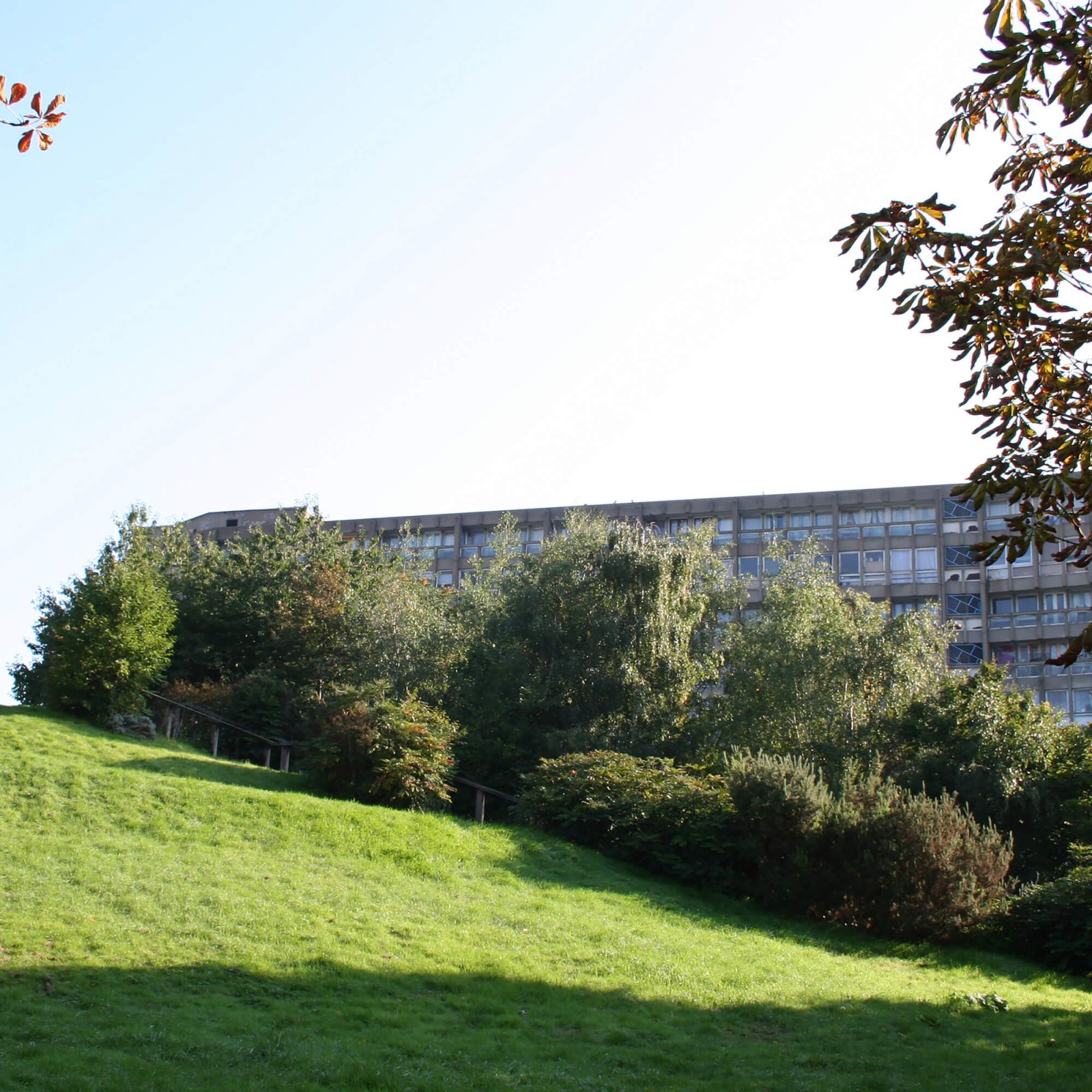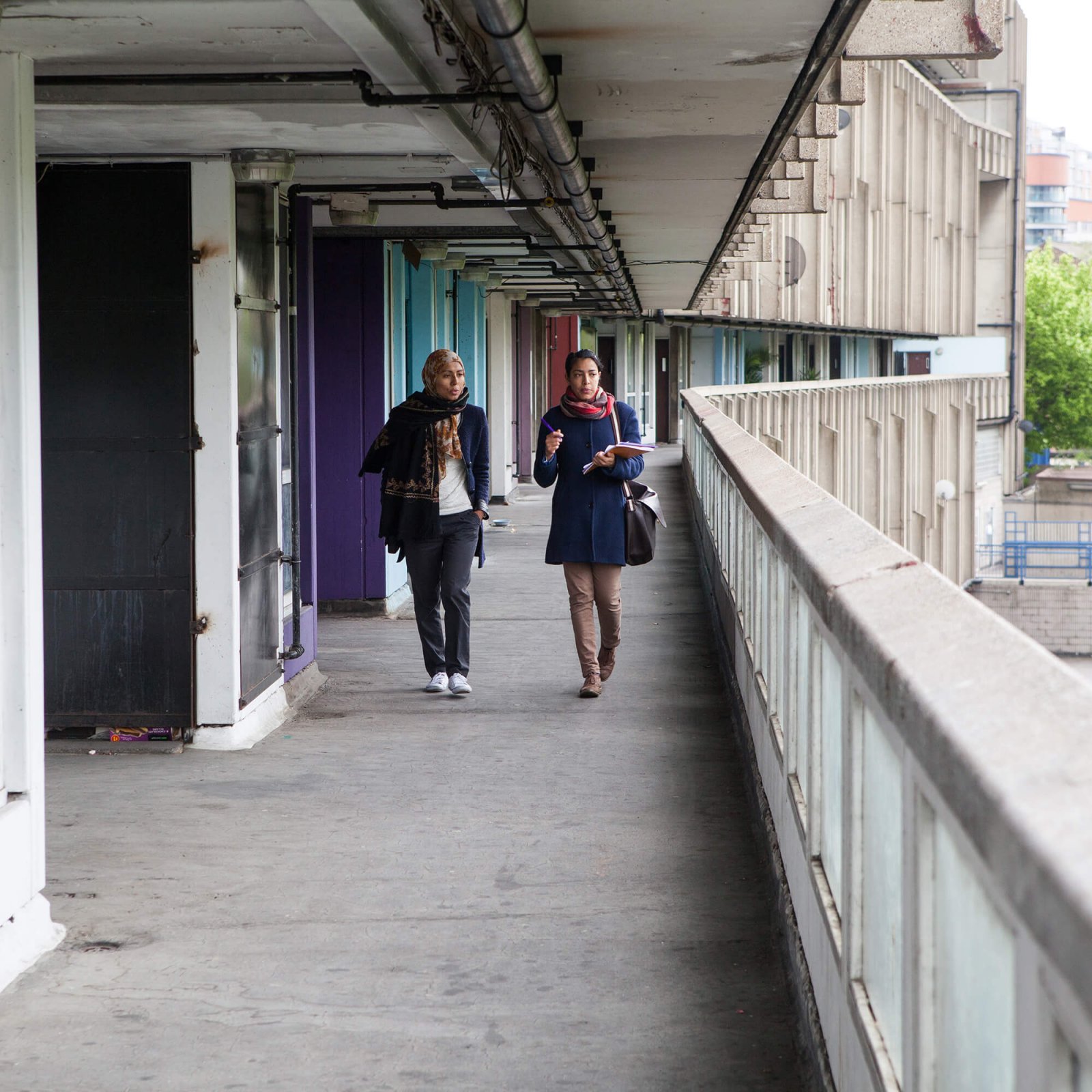
Housing, Form and Crisis at Robin Hood Gardens
Photographs by Kois Miah and others. Text by Nick Thoburn.
Designed by Brutalist architects Alison and Peter Smithson and completed in 1972 in Poplar, east London, Robin Hood Gardens has been celebrated as a “modernist masterpiece” and reviled as a “concrete monstrosity.” Yet in neither account have its residents featured more than as bit players to another’s story, where clichés and stigmatising portrayals abound. Recovering the social in the architectural, this exhibition centres the estate’s lived experience of a multiracial working class, not to displace the architecture’s experimental qualities of matter and form, but to radicalise them for our present.
The exhibition interleaves photographs of the estate’s residents and architecture with lived testimony, architectural critique, and the Smithsons’ project diagrams. Attuned to the estate’s forms, materials, and atmospheres, Robin Hood Gardens is encountered here in its lived experience, demolition, and afterlife, as it courses with the conflictual forces of the present.
The exhibition comprises six webpages, entered through the images above. The first four are organised around particular forms or qualities of the estate’s architecture.
Brutalism as Found is published in concert with Nick Thoburn’s book of the same title, from where the exhibition text is taken. Visit the book’s webpage.
This exhibition was generously supported by a Research Support Grant from the School of Social Sciences at the University of Manchester.
The project’s research and photography was funded by a British Academy/Leverhulme Small Grant.
